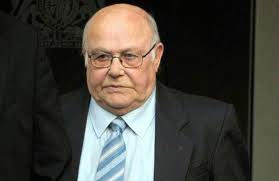“In my opinion you are thoroughly deceitful, dishonest and manipulative”
- Mr. Justice Field, sentencing Vincent Tabak, 28th October 2011
This damning and utterly false description of the defendant’s character can be shown to have applied far more accurately to the public prosecutor and her QC, the police, his own lawyers and the other bullies into whose clutches he had fallen since the time of his arrest. A barrister enjoys the privilege of immunity from prosecution for everything he says in court. Unlike the witnesses, he does not take the oath, so he has the freedom to “lead” evidence to deceive and manipulate the jury unless the judge intervenes to prevent it. It is also the judge’s job to ensure that the jury does not interpret as evidence anything they hear or see in court whose integrity is not confirmed by a witness under oath. The following account of this case’s main examples of documented deceit and manipulation is aimed at all those who dispute that the police and judiciary would ever knowingly convict an innocent man with the argument that THEY WOULDN’T DO THAT, WOULD THEY? - YES THEY WOULD!
She left of her own free will
 |
| Greg Reardon |
She was last seen wearing...
 |
| Joanna Yeates in the Bristol Ram pub |
Please get back in touch with me if you remember anything else
DCI Phil Jones urged the public to come forward with any information that might lead to a conviction. After taking statements from the residents of 44 Canynge Road, the police had told each of them that they should get back in touch if they subsequently remembered anything that could be material. The landlord Christopher Jefferies did just that, and eight days later he was arrested as a direct consequence. When Vincent Tabak saw on TV in Holland that his landlord had been arrested, he got his girlfriend to telephone to A & S Constabulary from Holland to tell them that he believed the landlord had moved his car during the critical evening. The Detective Constable sent to Holland to interview him on 31st December 2010 subsequently told the court that it was this telephoned attempt to incriminate his landlord that had first aroused the police’s suspicions of Vincent Tabak. Anyone who is ever tempted to help the police should bear this DC’s manipulative deceit in mind – and think better of it.The landlord was a witness, not a suspect
Towards the end of the afternoon of Tuesday, 21st December 2010, the same day that police took statements from each of the residents of 44 Canynge Road, a video of the first press conference was released by Avon & Somerset Constabulary, in which Joanna’s parents and boyfriend appealed for her safe return. That same evening, her landlord, Christopher Jefferies, telephoned the police to say that he had remembered seeing Joanna at the house together with two other people.Early the following day, Wednesday 22nd December 2010, a detective called on the landlord and took his 2nd witness statement. The video of an interview with Joanna’s boyfriend Greg Reardon broadcast that morning was withdrawn from the internet later that same day, and its licence revoked.
 |
| Joanna’s landlord Christopher Jefferies |
 |
| Lord Brian Leveson |
The inference is clear and astonishing. The suspicion of murder was no more than a pretext to enable the police to silence and discredit the landlord, and to ensure that the details and timing that he really gave the police of his sighting of Joanna never saw the light of day. It is conjectured that his statement was in conflict with something that Greg Reardon had said in the appeal video, and this was why the police withdrew this video. Presumably the landlord’s evidence would have been incriminating for Joanna’s boyfriend, if it were heard, and would have made the conviction of Vincent Tabak impossible.
Where was her body really found?
 |
| Channel 4 claimed the body was found in the Long Wood, some way to the west of Longwood Lane itself |
All the journalists saw this formidable fire brigade turnout. In an off-the-record briefing, they were told, however, not to ask any questions about its role, even though it was equipped to tackle a very big blaze, nor to reveal that the briefing had even taken place. The one national news service that released a film of the entire fire service arriving in convoy, ITN, was subsequently banned from a police press conference as a punishment.
She had no other significant injuries
Announcing that “Operation Braid” was now a murder inquiry, and he was leading it, DCI Phil Jones stated on 28th December 2010 that Joanna’s body was fully clothed, that there were no other significant injuries, and that he was open-minded about whether there had been a sexual assault. The deceitful and manipulative DCI Jones was well aware of the Home Office pathologist’s report describing Joanna’s fractured nose and the forty or so bruises distributed all over her body. These were hardly insignificant. Ten months later they would be presented to a jury as evidence of the violence of her last moments.They took away her front-door
 |
| Joanna Yeates’s front-door is theatrically removed for the benefit of the press |
The curious incident of the Volvo in the night time
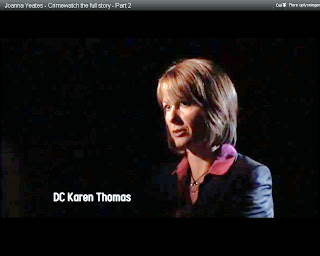 |
| Detective Constable Karen Thomas did not bat an eyelid as she explained to the jury that she had flown to Schiphol to spend 6 hours questioning Vincent Tabak about how his landlord’s Volvo was parked |
The 4x4 that never was
 |
| A light-coloured 4x4 vehicle in Longwood Lane |
It is very probable that both this vehicle and the witnesses were invented by DCI Jones, to reinforce the theory that Joanna’s body had been dumped by the roadside before the heavy snowfall had taken place, and that the 4x4 had been driven either by the killer himself, or by an accomplice attempting unsuccessfully to locate and hide the body after the killer was elsewhere obtaining an alibi. Inventing this incident would be consistent with the police’s need to prevent the public from suspecting a significantly later time for Joanna’s death (when Vincent Tabak would have an alibi) and a much more plausible dumping site for the body.
The absent sock and its abuses
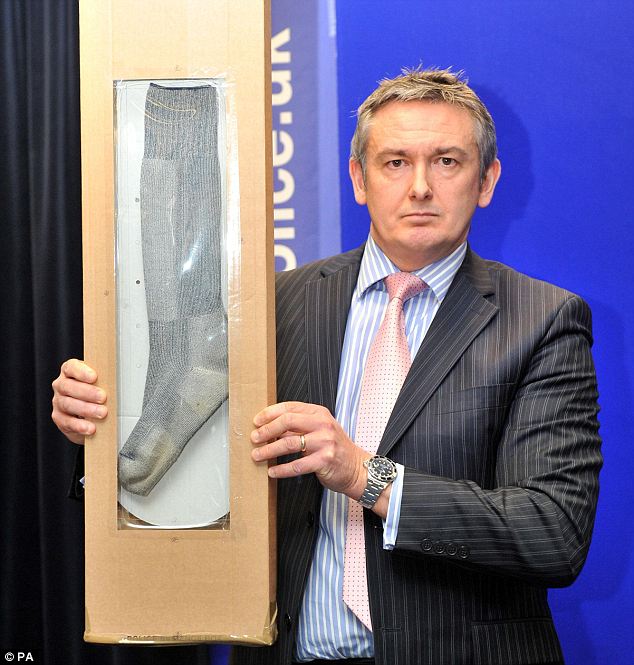 |
| DCI Phil Jones holding up a grey ski sock similar to Joanna Yeates’s |
Hell hath no fury like a suitor scorned
 |
| Mirror journalist Andrew Gregory |
 |
| Mirror journalist Richard Smith |
The only legitimate way that the police could have arrived at their bizarre theory was by interrogating an actual suspect candid enough to admit to such a crush, and to have it confirmed by independent witnesses. Yet the same article goes on to report that the police had not yet found any such suspect, let alone witnesses. It shows that their hidden agenda was to divert the suspicions of the gullible public away from what was most probably the true explanation for Joanna’s death, and replace it with an extremely far-fetched scenario that they evidently had already decided to use to convict Vincent Tabak. It was to form the basis of his “enhanced” defence statement. This clearly demonstrates a direct line from the police to his own defence lawyers.
The saga of a pizza
 |
| The pizza policeman DCI Gareth Bevan |
There would have been no mystery about the pizza, if DCI Gareth Bevan had not made a big mystery out of its disappearance, just two days before Joanna’s body was found. Joanna would have been very hungry by the time she bought the pizza in Tesco Express, as an afterthought, apparently after failing to find someone else who was free to share dinner with her. It seems obvious that she would have eaten it just as soon as she could get it heated up in an oven. So the object of DCI Bevan’s one and only press conference seems to have been to prepare the public for the discovery of her body, allegedly lying beneath snow that had fallen so soon after she bought the pizza that she couldn’t have had time to eat it. This indicates that the police already knew that Joanna was dead, and that she had died later than the Friday evening, but that they had already decided on the deceit that she had died on the Friday evening.
 |
| Dr. Jennifer Miller |
When asked by Counsel for the Defence why he had returned for the pizza, he answered “I wasn’t thinking straight”. Vincent Tabak did not explain what made the pizza so much more important for him to remove than any of the myriad of other objects that the jury had seen cluttering up Joanna’s flat. Why had she not already removed the packaging and put the pizza into the oven, which he acknowledged she had already switched on before he entered? This is one of those answers that had been put into his script just to fulfill the expectations of the jury. At the time of their perported encounter, he had not seen the memorable CCTV clip of Joanna buying the pizza in Tesco Express, nor the mystery of the missing pizza dramatised for TV by DCI Bevan.
 |
| The Home Office pathologist Dr. Delaney |
The landlord and the DNA on Joanna’s breast
The basis for Vincent Tabak’s arrest was the alleged presence of his partial DNA on the victim’s breast and jeans. The alleged match was obtained by enhancing samples collected by a member of the staff of LGC Forensics more than three days before the arrest of Christopher Jefferies. If the material matched Vincent Tabak’s DNA, then it could not have matched the landlord’s DNA. If these samples really had existed, police would never have arrested the landlord. If they did exist, then there was no reason to wait nearly three weeks (with the media growing impatient for an arrest) to arrest Vincent Tabak.Enhancing the partial DNA
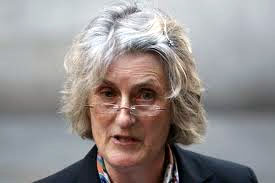 |
| Ann Reddrop of the CPS |
The sobbing girl
Shortly before Vincent Tabak was arrested, police initiated a manipulative public campaign to alienate his girlfriend Tanja Morson. On 17th January 2011 the victim’s parents took part in a further televised appeal scripted by a psychologist. They begged anyone close to the killer to come forward. On 20th January 2011 Vincent Tabak was arrested. On 21st January 2011 The Sun carried an unattributed story claiming that police had received an anonymous tip-off from a sobbing girl (who was never identified nor even mentioned during the subsequent trial). Cora Tabak responded publicly by denying strongly that her brother’s girlfriend had reported him to the police. There is evidence that the CPS may have been party to this deceit, and that its purpose was to manipulate the duty solicitor into believing that it was the tip-off attributed to an anonymous “sobbing girl” that had been the grounds for her client’s arrest, rather than the Schiphol interview and DNA swab three weeks earlier.The roller-coaster of their love
 |
| “He was cunning and dishonest towards his girlfriend” |
Trial by tabloid
The Sun, 21st January 2011: “Mild-mannered architect Vincent Tabak, 32, was arrested on suspicion of murder yesterday… DNA traces were found underneath Jo Yeates’s clothing, police sources revealed yesterday — suggesting for the first time that she may have been sexually assaulted. Samples were found on the 25-year-old’s breasts, midriff and jeans. It was already known that police had obtained DNA from her body — but it was not known how many traces or where they were found. All three are thought to have been from the killer’s saliva, but have yielded only partial results. Sources said that they should be enough to rule out suspects over her murder — but probably not enough to conclusively prove the guilt of anyone. Until now, police have said there was no direct sign of Jo being sexually attacked. But they had stressed it could have been the motive for her murder. Revelations about where the DNA was found lends further weight to the theory she was the victim of a sex killer who may have tried to rip off her top before tidying up her clothing after the murder. One source confirmed: ‘The fact that DNA samples have been found on her bare body could well mean whoever murdered Jo tried to sexually assault her beforehand.’ Jo is thought to have been strangled with one of her own long woollen ski socks, which is still missing.” The police knew perfectly well that no ligature had been used to strangle Joanna Yeates. None of the evidence leaked by the police to The Sun nor any other evidence was heard at any of Vincent Tabak’s preliminary public hearings.Vincent and Joanna worked together on joint architectural projects
It was just a thin wall
The Sun, 21st January 2011: Another tenant of what became Vincent Tabak’s flat said he had never known about a blocked-off door that once connected the two flats. But he added: “There was just a thin partition wall. You could hear what was going on next door.” In court, however, Vincent Tabak told the jury that the house was well insulated, and he never heard any sounds from any of the other flats. This claim was not challenged.A large bag or suitcase
A cunningly timed arrest
Vincent Tabak became a suspect on 31st December 2010 but was not arrested until dawn on 20th January 2011. The choice of a Thursday for his arrest gave the police two extra days to hold him in their custody because Monday 24th January 2011 was the earliest day he could be brought before a Magistrate.His protestations of innocence had to wait to be heard
The Magistrate failed to ask the defendant publicly how he pleaded, and failed to ask the CPS to describe the grounds for charging him. Not until nine months later, on 18th October 2011, at his trial, did the general public learn from DC Richard Barnston testify that the accused at that time had denied having anything to do with the death of Joanna Yeates. By that time nearly six months had elapsed since he had been persuaded, after more than eight months in Long Lartin prison, to do what the lawyers demanded after a lookalike had pleaded guilty to manslaughter by video-link on Vincent Tabak’s behalf at the so-called “plea hearing” on 5th May 2011 at the Old Bailey. Moving the venue 100 miles and changing the date of this hearing at short notice as well as the judge and the defence lawyers ensured that no one was in court who had ever met Vincent Tabak. The consequence was that most of the general public believed he was probably guilty right from his first public appearance, and that his intial protestations had been flagrant lies.The false witness
The CPS or the police arranged for and briefed a supervising officer from Whitemoor prison, Cambridgeshire, and a Salvation Army adherent, Peter Brotherton to visit at Long Lartin prison in January 2011. When he was moved to this prison, Vincent Tabak applied for counselling about his situation. The so-called chaplain noted down or tape-recorded, and “boilerplated” selected sentences from, their conversations, to produce a document that could be made to resemble a confession by the manipulative collaboration in court of the Defence QC. The latter deceived the jury into believing that Brotherton signed this statement on 16th February 2011 and passed to on to the prosecution. This was used as one of the means to prevent the jury from wondering why the accused had pleaded guilty to manslaughter on 5th May 2011 instead of Not Guilty.The secret inquest
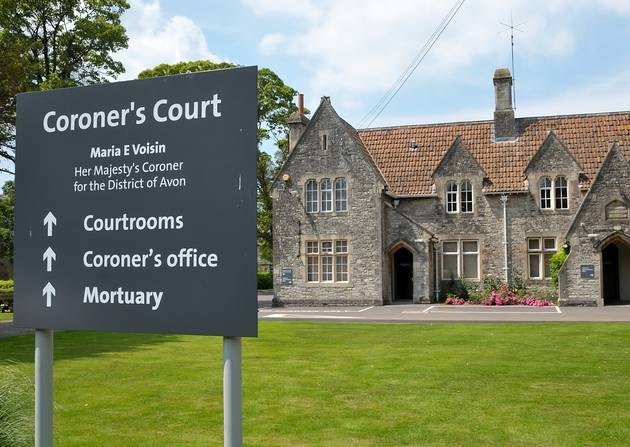 |
| The Coroner’s Court at Flax Bourton |
The unsound plea
Vincent Tabak’s plea and case management hearing by video-link was moved from Bristol to the Old Bailey and its date changed from 4th to 5th May 2011 at 24 hours’ notice, so that only accredited journalists and Joanna Yeates’s parents were in the public gallery. It also marked the first public appearance in his case of Mr. Justice Field and his defence QC William Clegg. No other conclusion can be drawn than that the CPS was determined to ensure that there was no one in court who knew the defendant or had even met him. The person seen on the video screen pleaded guilty of the manslaughter of Joanna Yeates, even though it would emerge at his trial that the evidence against him was so limited that his solicitor should have told him to plead Not Guilty. Some of the evidence, furthermore, can be shown to have been faked in court. So the inescapable conclusion is that it was an actor who entered the plea, and that the defendant himself would indeed have denied the accusation. This conviction is reinforced by the fact that Mr. Yeates admitted to the media later the same day that he and his wife had known the plea that would be entered beforehand.Horse-trading the character evidence
A secondary reason for moving the hearing on 5th May 2011 to the Old Bailey was to prevent anyone whom the court could not control from hearing the discussion about whether to admit the so-called “bad character evidence”. The general public did not hear about this so-called “evidence” until 28th October 2011, immediately after the trial had ended, and were allowed to assume that the discussion of its admissibility had taken place during the trial. However, there is no reason whatsoever to believe that it had not been included as part of the case for the Crown that was delivered to the defence on 1st April 2011. The first discussion of its admissibility must therefore have occurred on 5th May 2011. Joanna’s parents must therefore have known (and believed) the allegations about Vincent Tabak’s “sex bits”, whereas he himself would not have been aware of them until the trial.Since the names of the officers prepared to testify under oath to the “bad character evidence” have never been published, it is safe to conclude that it was fabricated not only as media fodder, but also primarily as a bargaining ploy to use to persuade the defence to undertake not to lead any genuine and independent “good character evidence”. In refusing to admit this as evidence for the jury to hear at the “show” trial, the judge brokered an unreported agreement that also prohibited any witnesses from testifying to the defendant’s exemplary “good character”. This is what actually happened. It enabled the defence lawyers to appear not to have compromised themselves even though they were in collusion with the CPS.
It may be conjectured that the prosecution case comprised other examples of “sacrificial” evidence that had served its purpose and so was not led at the trial. It is very likely that this included unsound allegations of findings of blood and DNA from 44 Canynge Road that had been used to trick Crossman Solicitors into suggesting that Vincent Tabak might be advised to plead guilty of manslaughter (as reported by the prison chaplain) before he had dismissed them.
The small town in California that moved 200 miles
 |
| Peach Tree Inn at San Luis Obispo |
No scream test in Canynge Road
In Agatha Christie’s mystery story “Murder in Mesopotamia” (1936), one of protagonists (Hercule Poirot in the book, Capt. Hastings in the TV version) arranged for a nurse to scream at the scene of a murder, and thereby demonstrated that the victim’s screams would not have been heard outside the building. On the third day of Vincent Tabak’s trial, the jury was taken on a field trip that included Canynge Road and the interior of Joanna’s flat at No. 44, with special instructions from Counsel for the Defence to stand outside No. 53 and decide for themselves whether screams coming from inside her flat would have been audible from where they were standing. That no attempt was made to carry out Agatha Christie’s scream test proves that the unstated purpose of the excursion was quite different, namely, to convince the jury and the journalists who were also invited for the first time to view the flat that it was here that Joanna had been killed. The police had spent the best part of £83,379 on an intensive forensic examination of the flat, yet not a shred of evidence from this examination was ever produced in court, proving that it was actually somewhere else that she had met her death. However, the judge accompanied the jurors on their inspection of the flat, and he never questioned the unanimous insistence of both the Prosecution and the Defence that it was in the flat that she had died. The flat was cosy and its poignant Christmas decorations had been left in place to bring tears to the eyes of the visitors. Also left in place were the scientists’ dirty forensic chemical residues in the bathroom, conveying a false impression of defilement and death.
It was not a [religious] confession
When the Salvation Army chaplain Peter Brotherton testified in court under oath on 18th October 2011 about his conversations with the prisoner, he explained to the jury that he had breached the defendant’s confidentiality “because it was not a religious confession”. In the event of an appeal in which his testimony is called into question, he will be able truthfully to state that he told the jury it was not a confession he had heard from the prisoner.The QC and the chaplain
The chaplain’s testimony did not include an actual admission that the defendant had killed Joanna Yeates. Cross-examining him, Mr. William Clegg QC (who was not under oath) suggested that Peter Brotherton’s memory of his own statement was at fault, and that Vincent Tabak had said, “For the crime that I have done”. In this way Counsel for the Defence ingeniously protected the witness from a future charge of perjury.The cop without a name
A marked characteristic of the investigation and conviction of Vincent Tabak following the murder of Joanna Yeates was the very high level of deceitful manipulation of the media by A & S Constabulary. Countless sentences in the media began with words like “The Police believe that…” or “Detectives believe that...” followed by statements that deceitfully twisted the known facts to fit some false impression that the police wished to implant in the mind of the public. “Police are looking into possible connections with other sex crimes.” What did they mean by “Other”? Joanna Yeates’s death was not a sex crime.The Special Troll Branch
A moderated Facebook forum “Joanna Yeates - discussion of the case” was set up on the internet by an anonymous administrator at Christmas 2010, and rapidly became very active and popular. This forum has been systematically infiltrated by one or more undercover agents, using a variety of fake profiles, presumably at the instigation of A & S Constabulary. They have been using their detailed knowledge of the published facts of the case to manipulate the discussion so as to reinforce the appearance of legitimacy of the actions of the police and the judiciary. Eventually the forum was shut down and very abruptly removed from Facebook. This intriguing aspect of police work has not hitherto been discussed in public.The news media that were groomed for sex
At the plea and case-management hearing held at the Old Bailey by video-link on 5th May 2011, the journalists who were permitted to cover the trial had been groomed by the judge, Counsel for the prosecution Nigel Lickley QC, and defence counsel. The following deceitful and manipulative sentences were written by a journalist who had been in court and heard the evidence that Miss Yeates had neither been sexually assaulted nor engaged in consensual sex with Vincent Tabak. The journalist, Steven Morris, can hardly have been unaware that, whatever the motive had been for strangling her, it had not been sex. “When police examined his background after his arrest over the death of Joanna Yeates they unearthed a secret life that they believe helps to explain why he killed his next-door neighbour... Police found that on the morning of the killing, 17th December 2010, Vincent Tabak had accessed a pornographic website, although it is not clear if he viewed any films” – “Detectives claim they established that he made late-night calls to numbers associated with escort agencies. In November Vincent Tabak went to California on business and again began researching sex sites and contacting escort agencies.” (The Guardian, 28th October 2011)Mr. Lickley demolished Vincent Tabak’s good name by unsubstantiated sexual allegations in a situation where the young engineer was in no position to defend himself. These were the methods of politics, not of a court of law. The English usually regard it as unsporting to kick a man when he is down, yet here was the failed politician smearing the accused as if he were a fallen dictator.
The digital display that wasn’t “evidence”
In the course of the trial in October 2011, the jury saw a great many videos and pictures that they believed to be evidence, even though no one testified under oath to their integrity. Some of the videos had been edited and may have been without timestamps or with timestamps added later. No one testified to the methods used to establish the timings of the incidents seen in the videos.She told no one what her plans were – and no one asked
 |
| There was much about Joanna Yeates’s relationship with her boyfriend Greg Reardon that the jury was not told |
The defence QC who “forgot” the good character evidence
Counsel for the Defence did not call any independent witnesses of his own to strengthen his client’s case. In particular, he produced no independent evidence of his client’s outstandingly good character.The missing evidence of actions prior to the attack
No independent evidence at all was heard of the defendant’s actions and character prior to the killing, whereas evidence was presented from independent prosecution 10 witnesses to his actions and character after the killing. Only his actions and character prior to the killing could have had any bearing on his intent to kill.The defence QC who wooed the prosecution’s witnesses
 |
| William Clegg QC |
The defence QC who failed to cross-examine
Counsel for the Defence failed to cross-examine many of the prosecution witnesses at all. He failed to cross-examine key witnesses with a strong interest in the conviction of the defendant and he failed to attempt to discredit their testimony.The key witnesses who were never called
 |
| Tanja Morson |
 |
| Landlord Christopher Jefferies |
The phoney IT expert
 |
| Lyndsey Farmery, the so-called IT-expert |
Let him who is without sin cast the first stone
On 28th October 2011, after his trial, Britain’s best manipulative journalists painted a deceitful picture of the world’s vast sex industry being financed by the secret life of this one industrious young Dutch engineer. They protested at the scandal that the jury had not been told - and Britain’s oh-so-puritannical public shook their heads over his depravity. It was so phoney and contrived, because none of this so-called “bad character evidence” was actually led by witnesses under oath, and perhaps because the judge had made the lifting of reporting restrictions conditional on journalists’ copy being negative and lurid.Suffer the little children
There was more to come. A couple of days after the trial, the media solemnly quoted a statement by an anonymous spokesman from A & S Constabulary that 30 illegal Group 4 child porn images had been found on Vincent Tabak’s computer - but that a further prosecution was unlikely. None of the journalists asked the obvious questions:- Had the images only just been found?
- If they had been found when he was first arrested, why had he not been charged with their possession at the same time as he had been charged with murder?
- If they had been found when he was first arrested, why were they not included among the application to submit evidence of his “bad character” to the jury? Had the Prosecution done so, this application would undoubtedly have been successful.
- Why were the police not investigating his sources for the images?
- Why were the police not trying to trace the children to protect them against further exploitation?
- Why did Vincent Tabak apparently not have the sense to eliminate the illegal images from his computer during the month available to him while police were swarming all over 44 Canynge Road?
 |
| My client can have no complaints about the fairness of the process |
According to Ian Kelcey, “The judge conducted the case impeccably. Tabak can have no complaints about the fairness of the process.”
